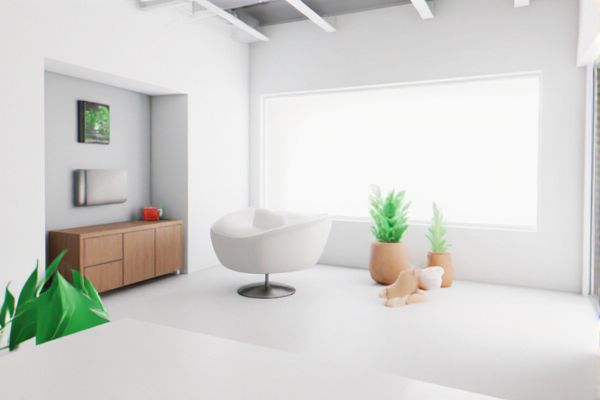
Discover endless creativity with our Random Room Generator designed specifically for Roblox Studio. Instantly generate unique room layouts to inspire your game design and speed up your development process. Dive into a seamless experience that transforms your world-building with customizable and randomized environments tailored to your vision.
Online tool for random room generator roblox studio
We have prepared several sample scripts for a random room generator in Roblox Studio for you to use and customize. You can enter your own list of rooms and generate a randomized selection with just one click. The tool provides both a randomized list and a single value for easy integration into your game.Data Source
Single Result
Multiple Results
Introduction to Random Room Generators in Roblox Studio
Random room generators in Roblox Studio utilize procedural generation techniques to create unique, dynamic environments within games. These systems rely on modular room templates and algorithmic placement to ensure varied layouts, enhancing player experience through unpredictability and replayability. Developers implement random room generators to streamline level design, allowing for infinite combinations and increased engagement.
Benefits of Procedurally Generated Rooms
Procedurally generated rooms in Roblox Studio provide endless gameplay variation by creating unique environments each playthrough, enhancing player engagement and replayability. This method reduces development time and resource costs by automating level design, enabling creators to focus on gameplay mechanics and storytelling. Additionally, it fosters creativity and experimentation, producing unpredictable and dynamic game experiences that attract a broader audience.
Key Components for Room Generation
Random room generator in Roblox Studio relies on key components such as procedural algorithms, modular room templates, and scripting logic to ensure dynamic and varied room layouts. Utilizing data structures like arrays or dictionaries to store room elements allows efficient retrieval and placement during generation. Integrating collision detection and pathfinding systems ensures coherent room connectivity and player navigation within the randomly generated environment.
Setting Up a New Roblox Studio Project
To set up a new Roblox Studio project for a random room generator, start by creating a base template with predefined room modules stored in ReplicatedStorage for easy access. Use scripting with Lua to programmatically select and instantiate these room modules in the Workspace, ensuring each generated room aligns with design parameters like size and theme. Incorporate folder structures and naming conventions within the Explorer panel to maintain organized asset management and smooth development workflow.
Scripting the Room Layout Logic
Scripting the room layout logic in a random room generator for Roblox Studio involves using Lua to dynamically create and arrange room components during gameplay. Key techniques include defining modular room templates, implementing algorithms to ensure non-overlapping placement, and using randomization functions like math.random for varied layouts. Efficient scripting also incorporates data structures such as tables to manage room states and transitions, optimizing performance and consistency.
Utilizing Roblox Lua for Randomization
Roblox Studio leverages Roblox Lua scripting to create dynamic random room generators by utilizing functions like math.random() to determine room components and layouts. Developers implement algorithmic logic to spawn varied room elements such as walls, doors, and furniture, ensuring unique gameplay experiences each session. Optimized use of Lua's table manipulation and event-driven programming enhances scalability and performance in random room generation.
Integrating Furniture and Objects Randomly
Integrating furniture and objects randomly in a random room generator for Roblox Studio enhances replayability by creating unique environments each time a player enters. Utilizing Lua scripts to position items like chairs, tables, and decorations dynamically ensures that rooms feel natural and varied while avoiding overlapping or inaccessible placements. Optimizing collision detection and spatial algorithms guarantees seamless object integration, improving both aesthetics and gameplay experience.
Managing Room Connectivity and Pathways
Managing room connectivity and pathways in Random Room Generator Roblox Studio requires implementing efficient algorithms to ensure seamless navigation between rooms. Utilizing graph-based data structures enables the creation of dynamic pathways that adjust as new rooms generate, maintaining logical flow and preventing isolated spaces. Optimizing room adjacency and door placements ensures consistent player movement and an engaging exploration experience within the generated environments.
Testing and Debugging Room Generators
Testing and debugging random room generators in Roblox Studio require rigorous playtesting to identify layout consistency and functionality issues. Using Roblox's built-in debugging tools, such as output logs and breakpoints, helps track script errors and optimize procedural generation algorithms. Iteratively refining the random room generator minimizes bugs and ensures smooth gameplay experiences for users.
Enhancing User Experience with Dynamic Rooms
Random room generators in Roblox Studio significantly enhance user experience by creating dynamic, diverse environments that keep gameplay fresh and engaging. These generators utilize procedural algorithms to design unique room layouts, textures, and obstacles, providing players with unpredictable challenges and continuous exploration opportunities. By integrating customizable parameters and real-time adjustments, developers can tailor experiences to different player preferences, boosting immersion and replayability.
 azrandom.com
azrandom.com